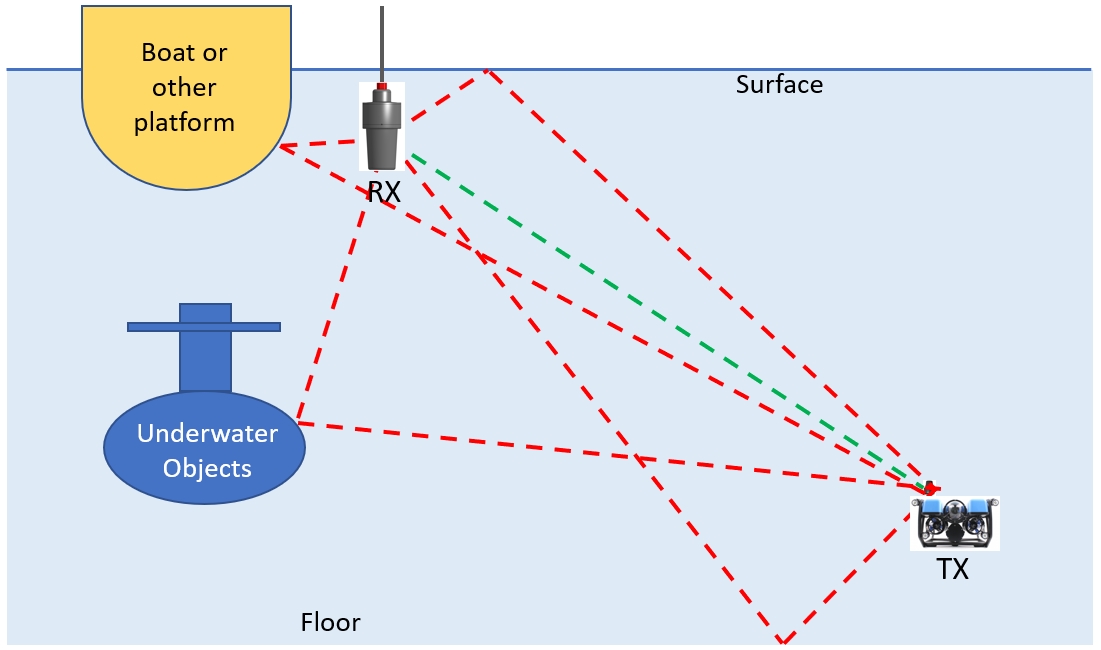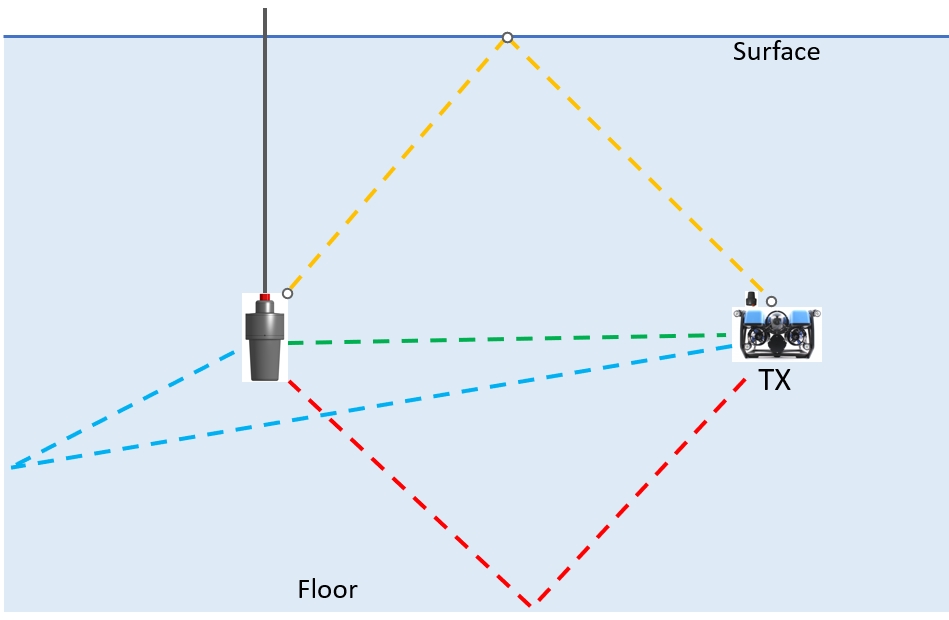Multipath
A definition of multipath and some examples
All sonar systems are affected by multipath, a phenomenon created by sonar signals following more than one path between a transmitter and receiver.
Multiple signal paths are created when a sonar signal reflects off one or more interfaces, and the reflected signal(s) combine with the direct-path signal causing constructive and destructive interference. The interference can create changes in the amplitude of the combined signal, and can also create changes in the phase of the received signal, when compared with the direct-only signal. Additionally, the combined signal may appear to arrive from a direction different than the original ping, which will cause location errors.

Generally, the more specular the reflecting surface, the more potential to interfere with the original signal and thus the operation of the ROVL. The good news about Lambertian reflection is that the energy of the incident sound is reflected in all directions, which means the energy in any given outbound ray is much smaller than the incident energy, and thus the potential to interfere is smaller.
The figure below shows the ideal operating conditions for the ROVL. The transmitter and receiver are suspended in deep water free of obstacles such that no reflection can reach the receiver before the entire original ping has been received. Of course, this is essentially an impossible constraint, but the closer you can come to achieving it the better the ROVL will work.

Note that slant range is measured from the arrival of the leading edge of the signal, so even if multipath interference is present, the slant range is normally accurate.
Last updated